Exercises For Pregnant Women Benefits, Types, and Tips
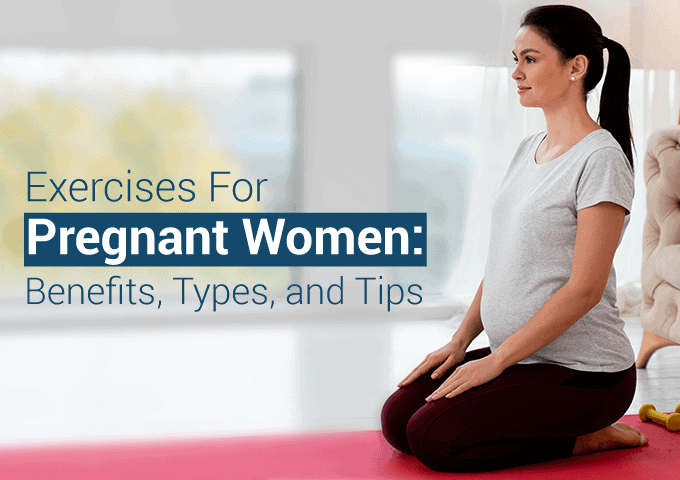 Exercises not only benefit women’s mental but also physical health during pregnancy. Most importantly, it gives the fetus (the baby) a healthier start. In pregnancy, you don’t have to exercise for prolonged periods. Even five times a week for 30 minutes or ten times a week for 15 minutes is good enough. But, before you start with any pregnancy exercise, it is best to consult with your doctor to avoid complications.
Exercises not only benefit women’s mental but also physical health during pregnancy. Most importantly, it gives the fetus (the baby) a healthier start. In pregnancy, you don’t have to exercise for prolonged periods. Even five times a week for 30 minutes or ten times a week for 15 minutes is good enough. But, before you start with any pregnancy exercise, it is best to consult with your doctor to avoid complications.
Book a personal training session and start losing weight now
Get healthy and fit with my customized workout routines
Contents
A. Benefits of Exercise During Pregnancy
Pregnant women who follow a weekly low to moderate-intensity exercise regime tend to maintain a healthy weight during pregnancy. Doing exercise while being pregnant prevents gestational diabetes and helps reduce delivery complications. Besides this, it helps:
-
- Improve mood: Pregnant women are more susceptible to antenatal anxiety and depression. So, since exercise helps release endorphins, it can help improve your mood and help you better deal with stress and anxiety.
-
- Lower blood pressure: Staying active and walking regularly can help lower blood pressure levels during pregnancy. A significant jump in blood pressure can be a warning sign of preeclampsia. Hence, it’s best to walk to keep your blood pressure stable.
-
- Alleviate back and pelvic pain: It is a well-known fact that pregnancy puts extra pressure on your lower half. This can result in lower back pain and pain in the pelvis. Here, pregnancy exercises can help strengthen your core, which can help alleviate lower-back and pelvic pain during late pregnancy. It is, however, advisable to avoid exercises that can worsen backaches.
-
- Fight fatigue: Many women during the first trimester and late third-trimester experience fatigue and tiredness. Now, while it may seem contradictory, ‘rest’ can worsen this condition further. As such, take a walk or join a prenatal yoga class to fight off fatigue.
-
- Improve sleep: Some pregnant women may find it hard to fall asleep. Here, it has been noted that women who exercise in pregnancy can sleep better. In short, exercise helps improve the quality of your sleep, making you feel well-rested.
- Relieve constipation: Exercise regulates blood flow and circulation. It also assists in flushing the waste material out of the body. Since constipation is a natural side-effect of pregnancy in some women, exercising daily can improve bowel movements, lowering the risk of constipation.
B. Types of Exercises for Pregnant Women
1. Aerobics
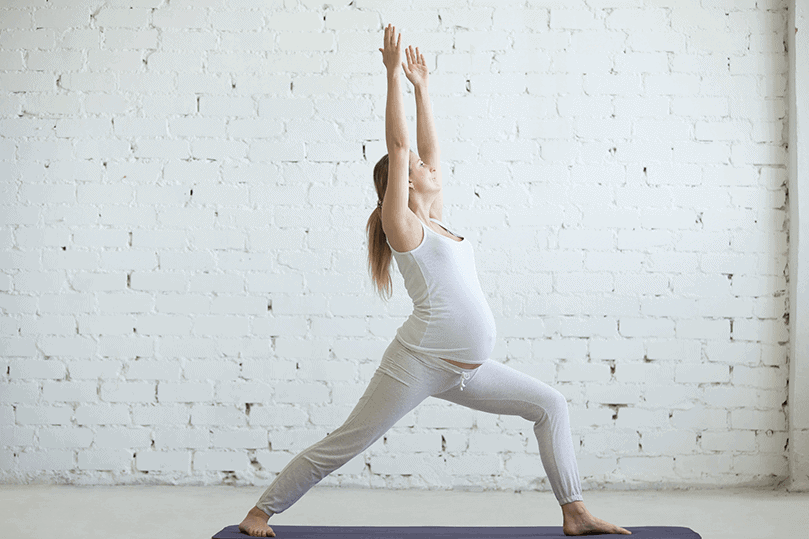
Low impact aerobic classes are designed especially for women. It is safe since at least one foot stays on the floor at all times. Women who attend regularly should inform their instructor of their pregnancy. The instructor can then modify the exercises plus advise suitable movements.
The benefits of this exercise are:
- It strengthens the heart and lungs
- It helps control muscle tone and balance
- It restricts stress on the joints
2. Pilates

Pilates is an exercise that enhances your flexibility, strength and muscle tone. It focuses on your core and is safe to practice during pregnancy. It also helps in improving posture and alleviating backaches. It is recommended to choose a prenatal class or let your instructor know you’re pregnant so you can avoid risky moves.
However, in your second trimester, avoid exercising on your back as the weight of the uterus can press on the ‘vena cava.’ Being the main vein that carries blood from various body areas to the heart, hurting or compressing it may interfere with blood circulation.
3. Yoga
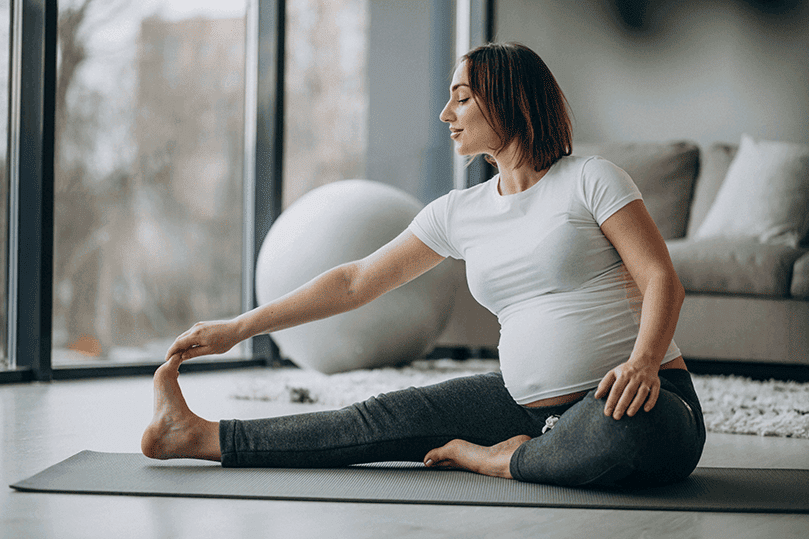
Prenatal yoga classes can help women with pain and stress management. It will also keep their joints limber and flexible. Plus, the instructor may suggest some tips on how to stay calm during labor and delivery.
The benefits of doing yoga during pregnancy include:
- strengthening the muscles
- stimulating blood circulation
- maintaining a healthy blood pressure
- improving flexibility and enhancing relaxation
As the pregnancy advances, contemplate on skipping poses that:
- can lead to overbalancing
- requires lying on the abdomen
- entails spending time lying flat on the back
4. Cycling
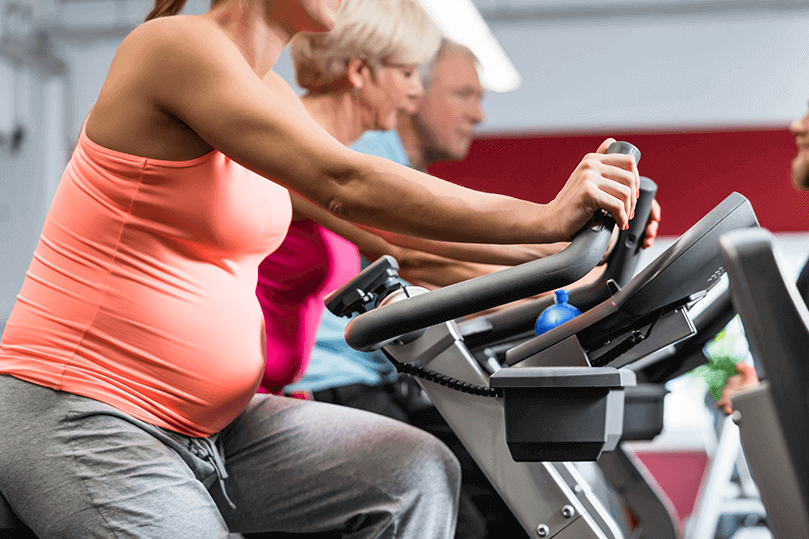
Cycling on a stationary bike is another simple exercise for pregnant women. It is safe and reduces stress on the joints and pelvis. It also reduces the chance of an accidental fall since the bike is stable.
5. Running
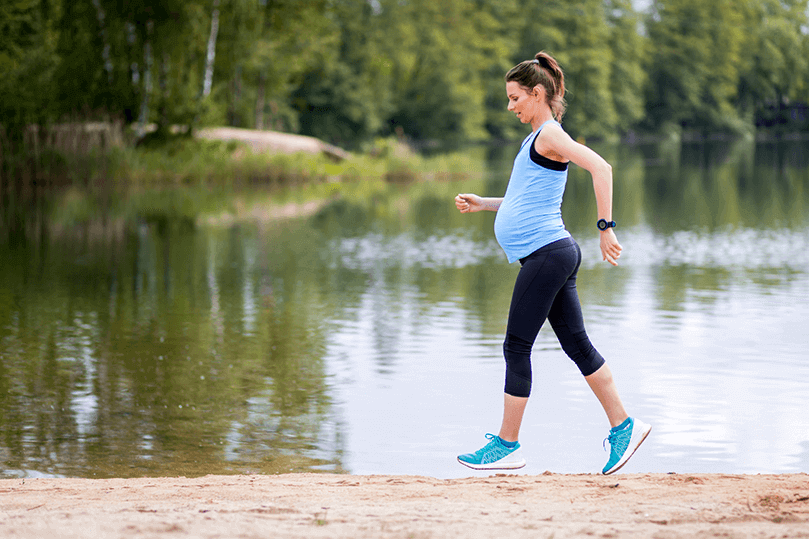
Running is a pregnancy exercise that wouldn’t harm you and your baby. If you were a runner pre-pregnancy, you will be fine continuing your routine. But, you have to take some precautions like running at a slower pace and reducing the miles.
6. Swimming
Swimming allows for a range of motion without putting pressure on the joints. Upthrusting may grant some relief from the extra body weight as the pregnancy progresses. By choosing a stroke that feels comfortable, you would also ensure there is no strain on your neck, shoulder or back muscles. Breastroke is an excellent swimming exercise for pregnant women. You can use a kickboard to aid in strengthening the leg and buttock muscles.
Tips for swimming safely:
- Always make use of the railing for stability when entering the pool.
- Abstain from jumping or diving into a pool as the sudden impact could hurt the abdomen.
- To minimize the risk of overheating, avoid warm pools, steam rooms, hot tubs, and saunas.
Further reading: How to Lose Weight After Pregnancy
C. Exercises to Avoid During Pregnancy
Most doctors advise avoiding exercises after the first trimester that require pregnant women to lie on their backs. Here’s a list of activities to avoid while being pregnant:
- bouncing
- jarring
- leaping
- a sudden change of direction
Typical sports, downhill skiing, scuba diving, and horseback riding are some of the adventurous sports to steer clear of because of the risks they pose. Though doctors say step aerobics workouts are acceptable, it is safer to lower the height of your step as your pregnancy advances. If you become extremely winded or reach a point of exhaustion, it is better to stop doing the exercise routine.
If you experience any of the below warning signs during any type of exercise, check with your doctor:
- vaginal bleeding or uterine contractions
- unusual pain or shortness of breath
- dizziness or light-headedness
- racing heartbeat or chest pain
- fluid leaking from your vagina
D. How to Exercise Safely While Being Pregnant?
Here are a few tips that can help people stay safe when exercising during pregnancy. Begin by a warm-up exercise and stretch for 5 minutes. End your workout session with 5-10 minutes of moderate exercises and end it with gentle stretching.
- Always wear loose-fitting and comfortable clothes with good bra support.
- Choose supportive shoes that are ideal for a particular exercise to prevent injury.
- Exercise on a horizontal, level surface to avoid getting injured.
- Avoid being overheated when exercising.
- Ensure you drink plenty of water before & during the exercise, and after the exercise to prevent dehydration.
- Get up gradually and steadily if you are lying down to prevent dizziness.
Book a personal training session and start losing weight now
Get healthy and fit with my customized workout routines
Conclusion
Regular physical activity can boost the health of both the mother and the fetus. It can also make pregnancy, labor, and post-delivery recovery easy. Even though the benefits of exercise during pregnancy are abundant, it is vital to be cautious and avoid overexertion. Hiring a fitness trainer is a good option as they can create a personalized workout routine for you and provide helpful advice on diet and nutrition. But, always ensure to check with your doctor before you make any changes to your daily routine during pregnancy.
Read More Blogs: https://www.sudamshelar.in/health-and-fitness-tips-for-woman/

Sudam Shelar
Sudam Shelar is a certified fitness expert and health coach, specializing in personalized training and nutritional guidance for optimal well-being. With a keen focus on dynamic workouts, corrective exercises, and tailored programs, he excels in muscle rehabilitation, personal training, and holistic wellness.

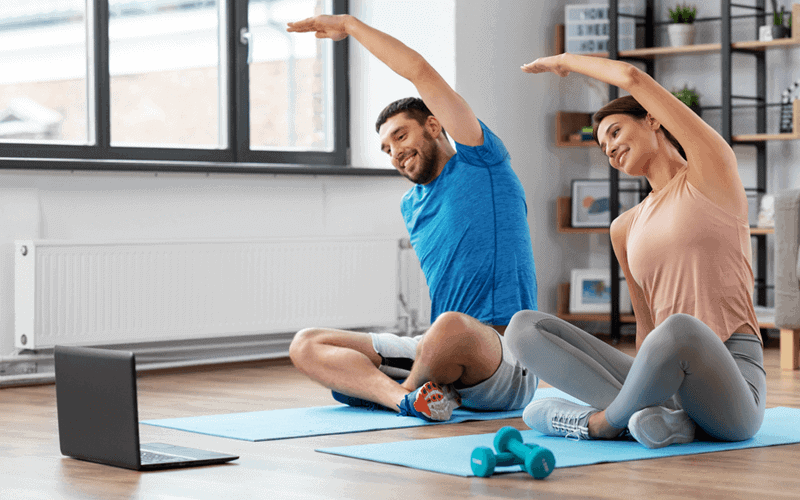
Leave a Reply